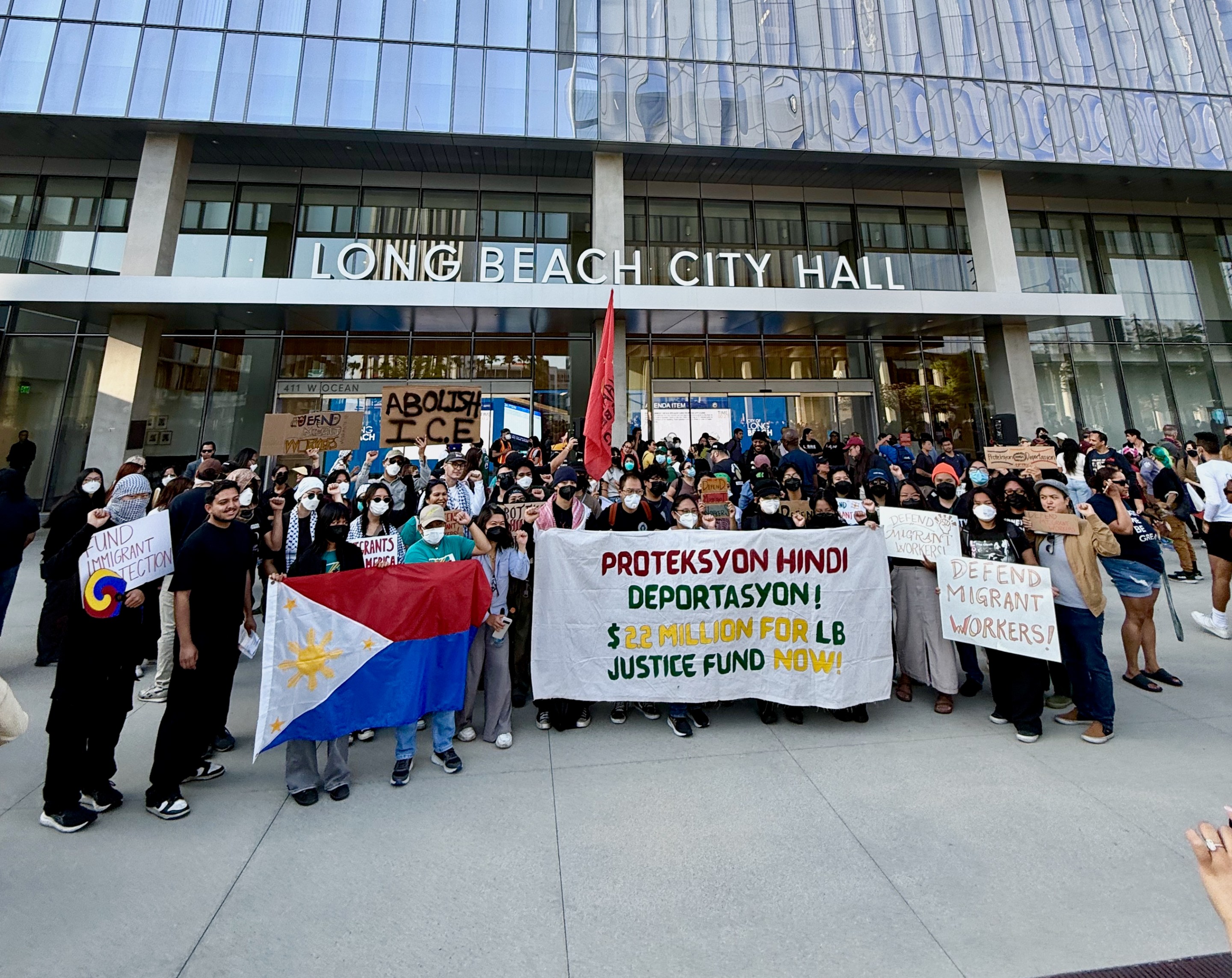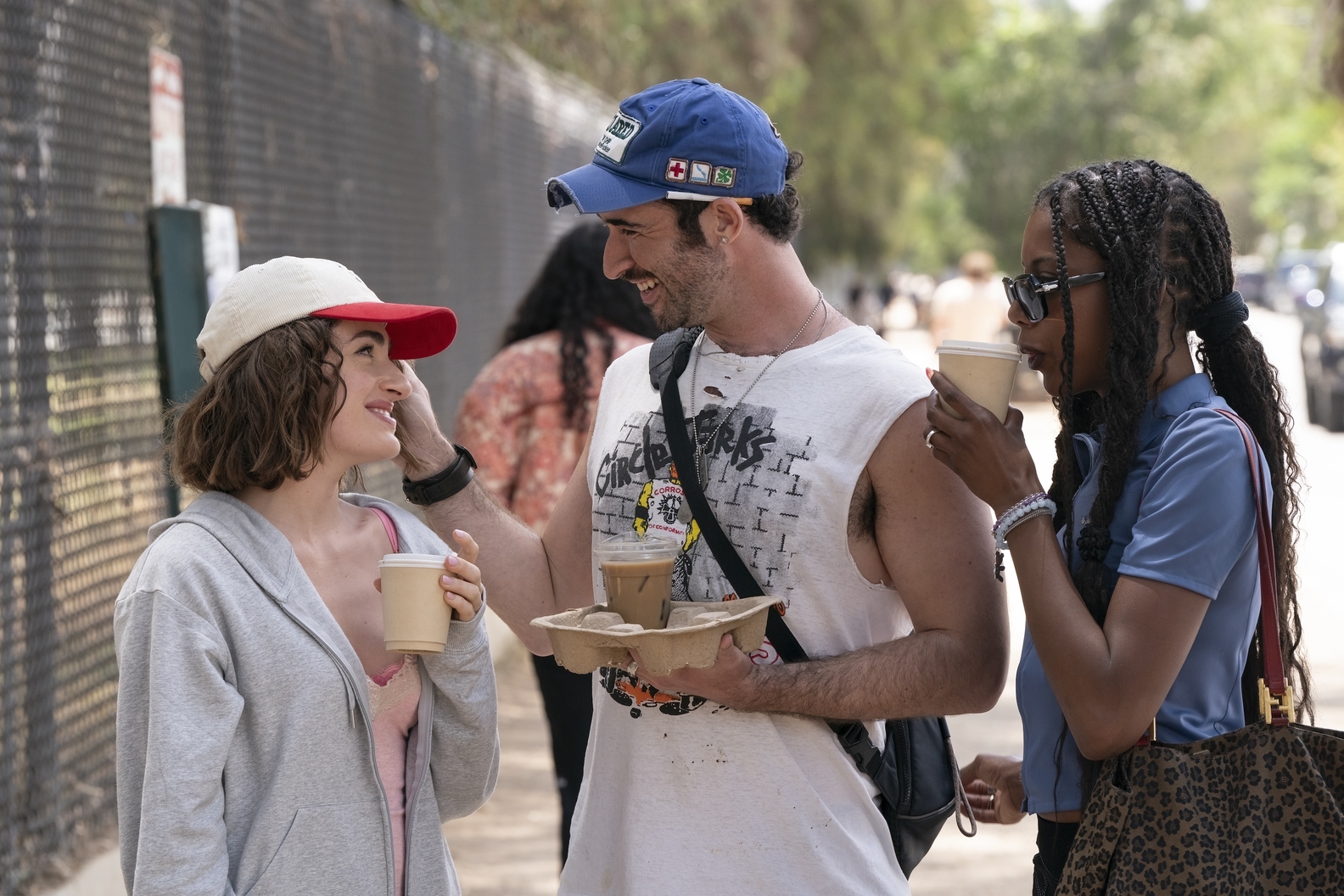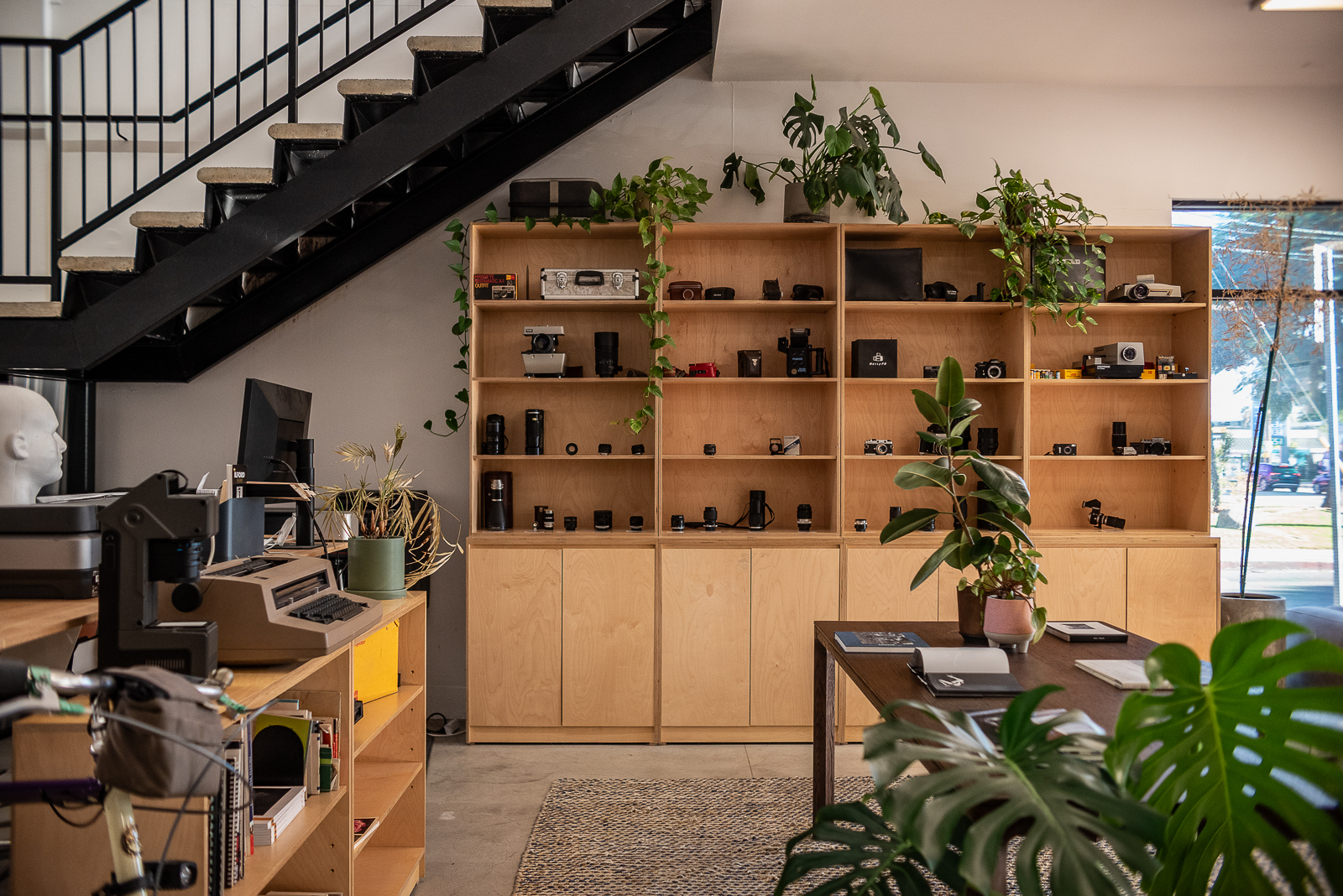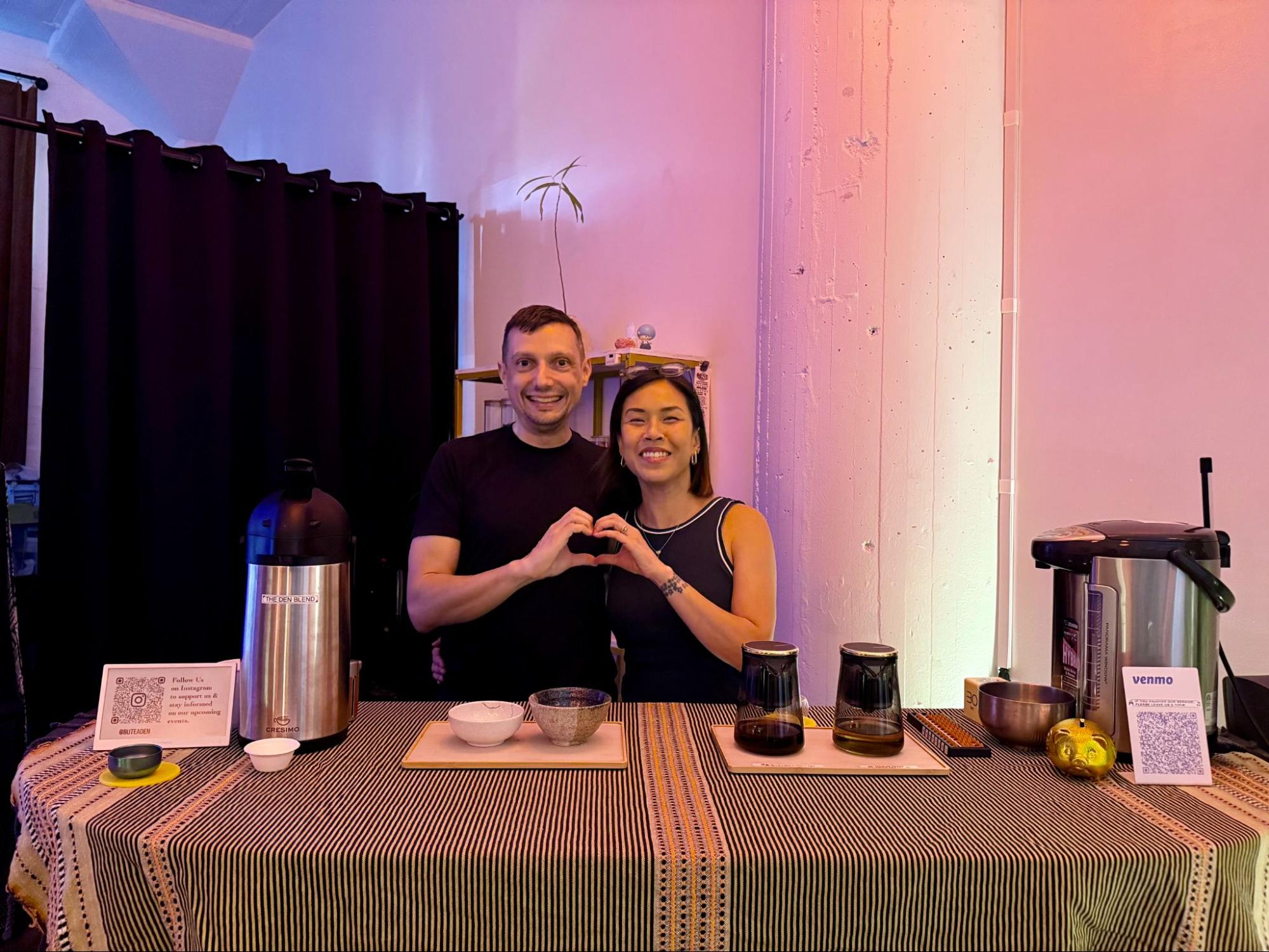The overcast sky was still grey as thousands stood shoulder to shoulder on Ocean Boulevard in Long Beach, about a hundred feet away from the water. Everyone is chanting for justice against the Trump administration’s immigration raids. Signs reading “No Kings” and “Who Would Jesus Deport?” bobbed above our heads. The vibe was electric but calm—neighbors, families, and activists united. A few volunteer marshals in neon vests directed traffic, keeping things orderly.
Notably absent? Police. Maybe a patrol car cruised by once, but that was it. No riot gear, no tear gas, no tension. Just a community speaking its truth.
I’d been to a couple of these Long Beach protests recently, and they all felt the same: peaceful, purposeful, powerful. Without cops looming, we managed our safety. Folks shared water, volunteers checked on elders, someone’s grandma passed around chocolate chip cookies she made from scratch, and kids cheered along with their parents against fascism.
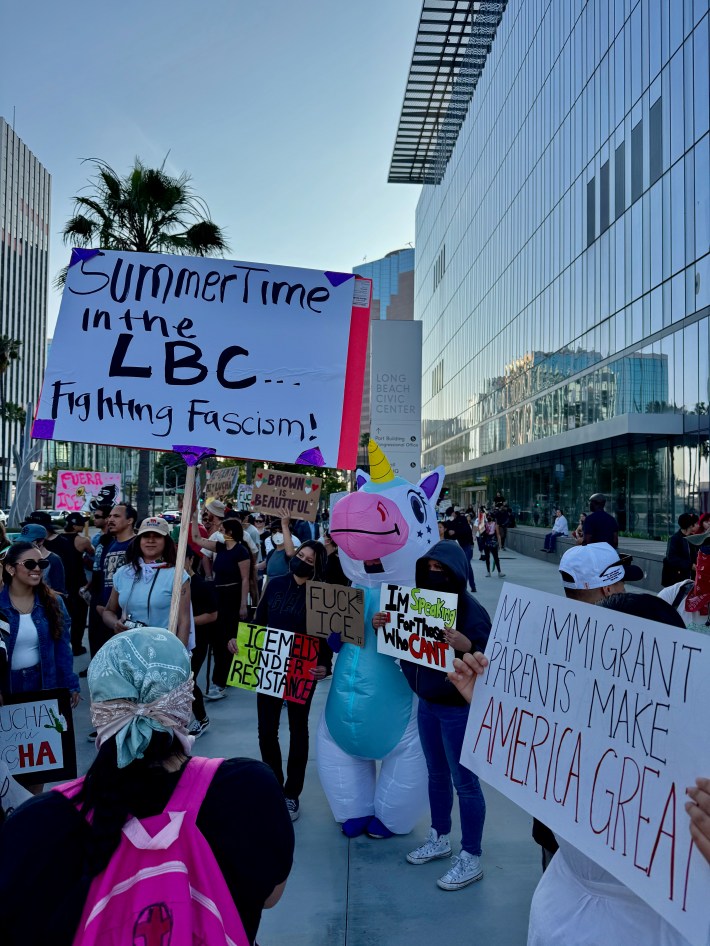

The Thurgood Marshall Institute found in its 2023 report that most protests, especially those focused on racial justice, remain nonviolent when police don’t intervene. Their data showed that in summer 2020, communities often organized their safety at demonstrations, relying on volunteers rather than law enforcement. Long Beach was living proof, and I had seen it with my own eyes.
Then I went to Los Angeles.
Last Saturday, after attending the Long Beach protest, I also joined the “No Kings” protest near City Hall in downtown Los Angeles. The energy started peacefully—thousands chanting, flags waving, the same righteous anger I’d felt in Long Beach. But a couple of hours in, the scene began to feel different. Lines of LAPD officers in riot gear stood grim-faced, gripping “less-lethal” riot guns. Federal agents and California National Guard troops flanked federal buildings, their presence heavy and unyielding. Helicopters thundered overhead. The air felt like it could crack.
By 4:30 PM, things unraveled. Police didn’t hesitate to form skirmish lines and box in protesters. Rubber bullets rained down, leaving welts and screams in many. I saw a young man, blood streaming from his forehead, being helped by volunteer doctors. Social media later confirmed she’d been hit by a less-lethal munition, echoing an incident reported by @Miglovin at the same protest. Tear gas started to sting my eyes as I ducked behind a corner. What began as a rally for immigrant rights and against fascism spiraled into chaos.

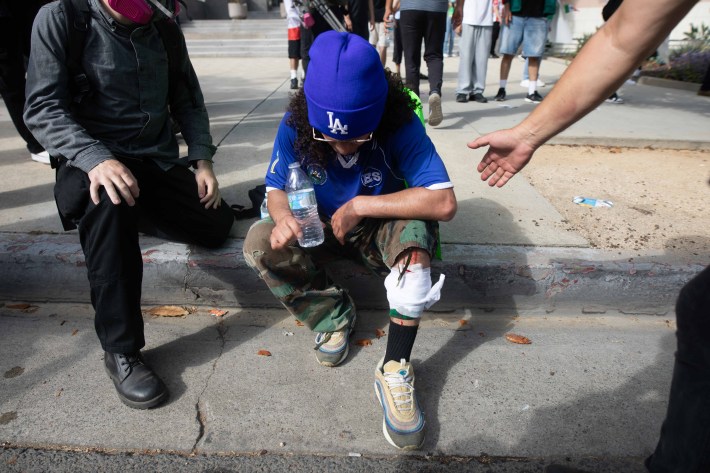
The Thurgood Marshall Institute’s research points to a pattern: Police show up more often, and with more force, at racial justice protests. Their 2023 brief found cops were nearly four times as likely to use violent tactics like tear gas or rubber bullets at these events compared to others. In L.A., this played out in real time. The New York Times described how police used “earsplitting explosives” and batons, escalating tensions rather than defusing them. ACLED’s 2020 data backs this up: over 93% of Black Lives Matter protests were peaceful, but violence often erupted when police or counter-demonstrators got involved.
My experience wasn’t unique. In Long Beach, the absence of police allows us to breathe, organize, and express ourselves without constantly looking over our shoulders. In L.A., their militarized presence felt like a challenge, daring the crowd to react, even as they chanted “peaceful protest!” with their arms up.
Like my favorite Basque band, Eskorbuto, famously proclaimed in one of my favorite songs from them: “Mucha policia, poca diversion.” The logic is straightforward: No police, no violence; too many police, too much chaos.
Comparing Long Beach to Los Angeles in terms of peaceful demonstrations versus protests that turn violent due to police may be like comparing apples to oranges. But the stark contrast in police presence and outcomes still reveals a powerful truth about how heavy-handed tactics can escalate tensions, regardless of a city’s size.
Studies, like those from Amnesty International in 2020, document how police tactics—kettling, chemical irritants, indiscriminate force—turn peaceful assemblies into battlegrounds. The Kerner Commission, way back in 1967, said the same: police actions sparked half the riots they studied. Yet here we are, decades later, watching history repeat itself.
Long Beach showed me that protests can be a celebration of resistance, a space for community. L.A. showed me how fast that can flip when police treat demonstrators like enemies at war. As I left L.A., choking on tear gas and dodging debris, I thought of Long Beach’s sense of peace, and how that gives me strength to keep covering Los Angeles’s militarized madness.
Like my favorite Basque band, Eskorbuto, famously proclaimed in their political anthem: “Mucha Policia, Poca Diversion.” The logic is straightforward: No police, no violence; too many police, too much chaos.
